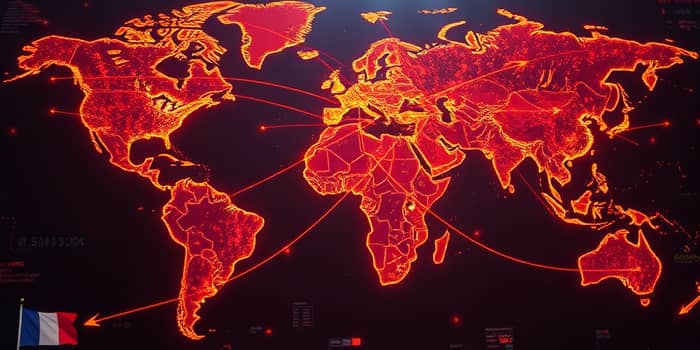
In an era of intensifying global rivalries and shifting alliances, investors face a landscape where traditional financial analysis is no longer sufficient. The interplay between national governments and markets has become a pivotal factor, influencing everything from supply chains and trade rules to capital flows and portfolio allocations. As 2025 unfolds with record numbers of conflicts and political transitions, understanding the nexus of geopolitics and investment strategy is indispensable.
This article delves into the emerging frameworks, offers concrete case studies, and presents actionable insights to help investors navigate an increasingly complex environment. By integrating geopolitical considerations into decision-making, stakeholders can better anticipate risks, seize opportunities, and build resilient portfolios.
The integration of geopolitics into investment strategy is now a permanent fixture. No longer a fringe consideration, geopolitical dynamics have become central to risk assessment and asset allocation. From trade disputes between major powers to sanctions targeting critical industries, global power plays can trigger abrupt market shifts.
Between 2010 and 2024, the frequency of major risk events tripled, underscoring a trend that shows no sign of abating. In 2025 alone, there are 59 active military conflicts worldwide, creating volatility spikes and unsettling traditional return patterns. Institutional investors consistently rank geopolitical risk alongside macroeconomic fundamentals, demonstrating its enduring relevance.
Understanding the primary forces at play allows investors to model potential outcomes and adjust strategies proactively. Several drivers stand out:
Each of these factors can alter sectoral performance. For example, technology firms with diversified production bases have shown greater resilience, while energy-intensive industries face elevated cost pressures and regulatory uncertainty.
Geopolitical shocks tend to coincide with lower equity returns and higher volatility. During high-risk periods, investors often flock to safe-haven assets. Gold and US Treasuries remain classics, but in 2025 Bitcoin and other alternatives have also seen inflows under specific conditions. Sectoral impact varies:
For wealth managers, the principal response is diversification across regions and asset classes, complemented by tactical tilts toward less-exposed geographies and hedging instruments.
The war in Ukraine (2022–2025) brought Europe’s reliance on Russian energy into stark relief. Germany’s manufacturing sector contracted markedly, illustrating how energy security considerations can undermine longstanding competitive advantages. Conversely, large-cap multinationals weathered the storm more effectively thanks to diversified supply chains.
In Hong Kong, political tightening since 2019 prompted capital flight and depressed real estate values. Investors shifted assets to Singapore, Canada, and the UK, driven by concerns over regulatory unpredictability.
Amid these crises, the concept of safe havens has expanded. While gold’s allure endures, Bitcoin is increasingly treated as an alternative refuge by a subset of investors, especially when digital payment rails or sanctions disrupt traditional channels.
Despite its importance, many investors lack robust frameworks for quantifying geopolitical exposures. Common approaches include media sentiment analysis, volatility metrics, and proprietary risk indices. However, these tools often fail to capture cascading effects and second-order impacts.
Leading institutions now employ adaptive, scenario-based risk management frameworks to model low-probability, high-impact events like military escalations in the South China Sea. Scenario planning, paired with regular portfolio stress tests, can illuminate hidden vulnerabilities and guide preemptive hedging actions.
As the world settles into a multi-aligned and fluid strategic order, investors must embrace a mindset of continuous vigilance. Static, geography-based allocations are giving way to dynamic, thematic strategies that prioritize resilience and optionality.
Key recommendations include:
By focusing on tactical flexibility and nuanced analysis, market participants can better navigate uncertainty, capture emerging opportunities, and protect long-term capital.
Ultimately, geopolitics is not an intermittent disturbance but a structural driver of macroeconomic outcomes. Investors who internalize this reality and adapt accordingly will be best positioned to thrive in a world where change is the only constant.
References













